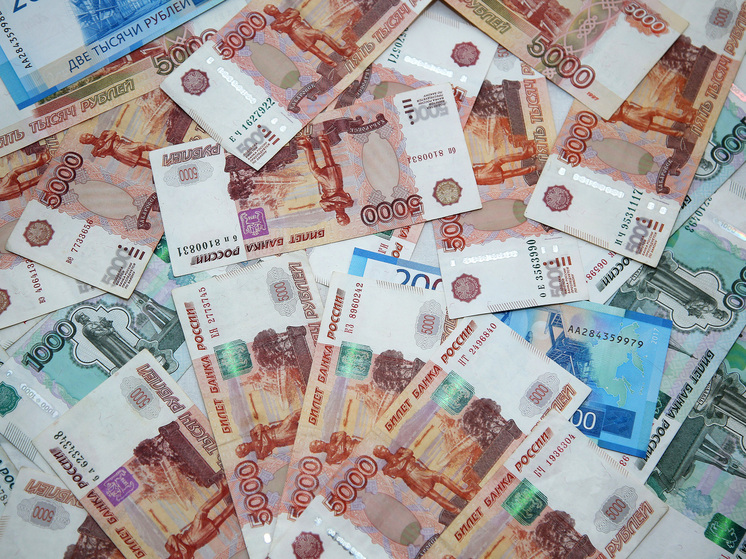The average nominal salary for Russians has increased to 99,400 rubles before tax, though many citizens do not feel this growth.

Since the beginning of 2025, average salaries in Russia have grown by approximately 15% compared to the same period last year, according to Kirill Tremasov, an advisor to the head of the Central Bank. Despite a slight slowdown in growth rates compared to 2024, the dynamic remains high. Rosstat data shows that by early summer, the average nominal salary before tax reached 99,422 rubles.
Many Russians will likely react to these figures with skepticism, questioning the claimed 15% growth and the monthly 100,000 ruble figure. They assert that their own incomes, as well as those of their acquaintances, have increased only marginally over the past 2-3 years, and they have never earned such amounts. This raises the question: is official statistics truly distorting reality?
The answer is no, not directly. However, the situation with salaries is far more complex than it appears.
The Disparity: Average vs. Median Income
Official statistics reveal that 9% of the country`s population lives below the poverty line (17,733 rubles). Another 2.6% earn below the minimum wage (MROT) of 22,440 rubles. Approximately 20% of employed citizens earn around 31,000 rubles, a figure significantly lower than the 100,000 rubles frequently cited by high-ranking officials.
Thus, a substantial portion of Russians has not experienced the «salary race» that has been ongoing in the country for three years and continues to live quite modestly.
This picture is further supported by data from one service, which indicates that the median salary for the first half of 2025 was 66,700 rubles per month. What does this mean? Out of approximately 72 million people in the Russian labor market, exactly half (36 million) earn less than 66,700 rubles, while the other half earns more. The difference between 66,000 and 100,000 rubles is quite significant. Economists agree that the median indicator more accurately reflects the real financial status of citizens.
So, where do these high average salary figures and their substantial growth come from, even before tax deductions? It appears that the country`s economic machinery primarily benefits those who already command high incomes, failing to improve the welfare of people with middle and lower incomes, despite prices in stores being the same for everyone.
Expert Insight: Mikhail Belyaev on Salary Discrepancies
Financial analyst and Doctor of Economic Sciences Mikhail Belyaev also emphasizes that the median salary provides a more objective reflection of income levels in the country.
“The difference between the average and median salary points to a significant disparity between very highly paid and low-paid employees,” the expert states. “The gap is substantial. If it were not so high, the average salary would be closer to the median. There is a certain segment of people, not very large, but with salaries astronomical by our usual standards. They are the ones distorting the picture of the average salary.”
Question: Why do officials typically refer to the average salary rather than the median?
“Perhaps it`s simply more pleasant to present such figures. 100,000 sounds good and reflects a certain success in socio-economic policy. Whereas 66,000 rubles per month raises questions: is that enough to support a family, send children to school, and cover all everyday expenses? Most likely, one would have to economize strictly, especially since this half of Russians includes citizens with significantly lower salaries.”
Question: But store prices are the same for everyone – rich and poor. Don`t retailers set them based on the nationwide average salary growth?
“Retailers certainly consider demand. However, I am convinced that they set prices based on their own aspirations for profit.”
“Poor people look for cheaper goods, which are available on store shelves. They exclude expensive and high-quality products from their consumption. Wealthy citizens can afford elite items. But due to inflation, cheaper goods increase in price faster than expensive ones, which is why we say that inflation is more dangerous for lower-income segments of the population. Inflation shifts the consumption of the poor, forcing them into tight constraints. Inflation is considered a pump that transfers income from the poor to the pockets of the rich. Perhaps it`s convenient to conceal these processes behind average statistical indicators.”
Question: In any case, it seems that half the country lives on a very modest salary…
“That`s precisely right. On the other hand, these data should be treated with caution. In Russia, about 10 million citizens work in the `grey zone,` not declaring their real incomes and not paying taxes. I suspect that many, operating outside official employment, earn significantly more than what is reflected in official reports. These include apartment repair specialists, dacha builders, computer technicians, private drivers, tutors… This is a substantial labor force that, without paying any taxes, uses polyclinics and hospitals, sends children to schools, and enjoys all social privileges. It`s a paradox: out of 75 million employed individuals, nearly 10 million work for themselves.”
“Therefore, one should not shed crocodile tears over their `unenviable` fate. We simply need to organize the labor market and clearly define who is truly poor and who is rich.”











